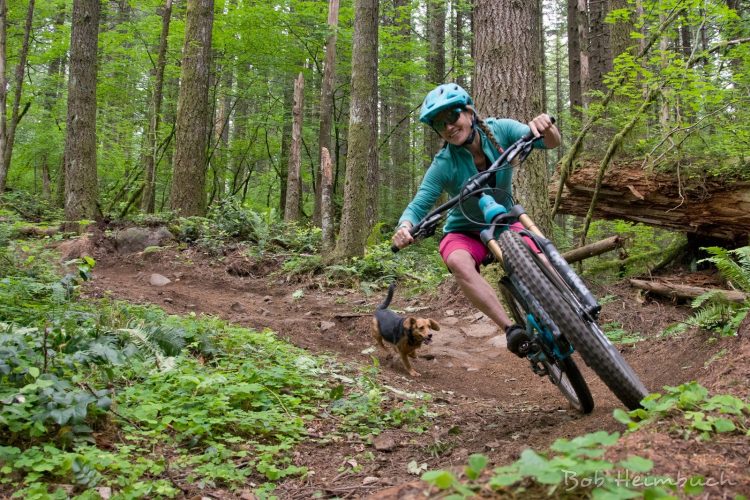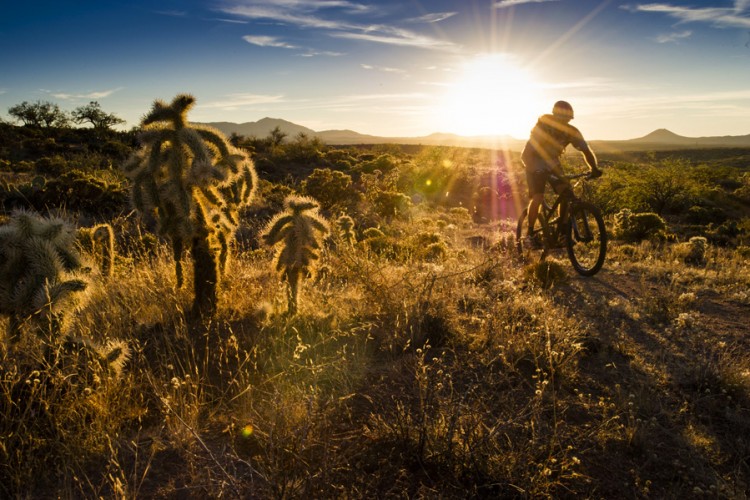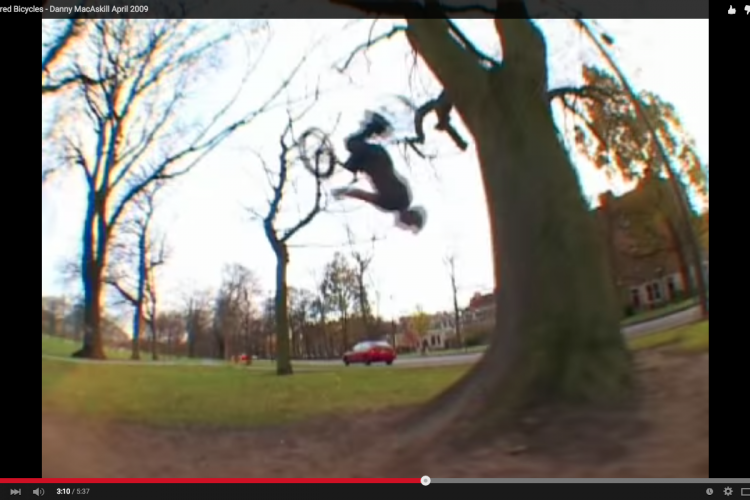
Like many mountain bikers, I am pretty naive to the problems trail builders face. I just turn up at the trails, shred around, have a good time, and head home. Sometimes on my XC rides I bump into a grumpy walker or two, I moan about them for a few weeks, and then I get on with my life.
I wish England and Wales had the same “right to roam” access laws as Scotland.
I wish more trails were built.
I wish some of my local DH trails were better maintained.
The same as most riders, right? “Pick up a shovel then!” I hear you all cry, but it’s not always as easy as that, is it? Sadly, you cannot just build whatever trail you like, wherever you like. There is more to this trail building and maintaining malarkey than you may realize. Rather than continuing to moan, I decided to investigate what challenges trail builders face when creating these ribbons of dirt that give us so much happiness.
There are two main types of riding spots in the UK with each facing a largely different set of challenges.
Natural Hand-Built Trails
Natural, hand-built trails are usually found in smaller woodland sites and aren’t very well advertised, if at all. In style, they tend to be technical, rough, and on the more difficult side.

Challenge 1: Confusion About the Trail Approval Process
A large proportion of the natural hand-built trails are unauthorised, and one of the main reasons this is the case is a lack of understanding about how to go about building trails legally. The confusion around the process involved is the first challenge builders face.
Solution
I spoke to Natural Resources Wales MTB Ranger Bob Campbell, a keen mountain biker himself, to find out how to go gain permission to build in your local woods legally. By following these guidelines, you can avoid the unnecessary disappointment of your trails being destroyed and safeguard the future of favoured riding spot for years to come:
“In the first instance, contact the landowner and have a discussion with them. We would treat this like any other group of users who want to use the public estate so in terms of NRW forestry land, you would need to talk to the Local Area Team and start an initial dialogue with them about the viability of the site. Once that has happened, they will point them to the ‘Woodlands and You Scheme,’ which is how we invite people or groups to apply to run any type of project or events on our managed estate. There would need to be a group or club set up to manage the site. Groups are also free to apply with the backing of an industry partner, such as a local bike shop or brand.
Local staff will then work with the group closely to help get the site up and running properly. This might be pointing them to sources of funding, advising them on signage issues, passing on contacts for other user groups, assistance with standards for inspection, maintenance, and other guidance. We are more than happy to share the experience we have from managing our own trails and working with other local trail building groups. We would expect any group to follow IMBA guidance on sustainable trail building (buy online) and use sustainable materials.”
Challenge 2: Liability Concerns of the Landowner
The second challenge that builders will face is a reluctant landowner. The best weapon for success here is foreplanning by trying to understand the landowner’s objections. Chief amongst these–and quite possibly the easiest to understand–is their concern over who will be held legally responsible if someone were to have an accident on their land.
Solution
By establishing a club and accepting responsibility for the management of the site, you can take the onus off of the landowner. Reassure the landowner that all appropriate risk assessments will be carried out as part of gaining planning permission. Install numerous signs to warn any passing walkers (if relevant) and riders of all levels what features to expect on each trail. Any particularly hazardous features, such as north shore bridges, drops, and gap jumps should have additional warning signs.
Challenge 3: Damage to Crops and Interference with Harvesting
Many woodland sites are a source of income to landowners, particularly the Forestry Commission. They could object on the basis that their crops will be damaged by inconsiderate bikers cutting trees down to build trails. There may also be a safety concern if bikers continue to ride in areas where harvesting is taking place.
Solution
Again, this will most easily be solved by creating a club to manage the building of trails. Having an established club can help to show the landowner that there will be good lines of communication regarding when and where harvesting will take place. Furthermore, showing the landowner that you have an active group page, such as a Facebook page, where you can easily notify riders which areas are out of bounds can also help alleviate their concerns.
Challenge 4: Environmental Impact
This challenge relates to the damage that bikers may cause to the natural environment. Local conservation groups will raise concerns about the impact that mountain biking could have on the habitat of local wildlife if not handled sensitively. Some landowners may refuse to allow a mountain bike trail to be built solely to safeguard the payout they receive in exchange for allowing some areas to remain untouched.
Solution
It is necessary to allow knowledgeable officials to carry out searches to ensure trails will not be in breach of legislation for protected species, archaeological sites, mining relics, public rights of way, interfering with watercourses, or damaging sensitive biodiversity. Be open-minded with where you would like your tracks to go and show understanding if you wish to get the landowner on your side.
Challenge 5: Conflict with Other Trail Users
Walkers and horse riders may contest your use of the site if the trails will cross over or end on their footpaths and bridleways. For their own safety, they have a legitimate argument. Horse riders, in particular, have strong objections, as the noise and sudden appearance of flying bicycles could spook their horses and could cause a serious accident.
Solution
Where possible, pick a build site away from their trails. If contact is unavoidable, ensure you cross the preexisting trail in a section where both users can clearly see each other coming. If trails come out on a fire road, plan a sharp turn in the trail before the exit to force riders to slow down.
Van Road Trails is an example of NRW and a mountain bike group working together successfully.
Bike Parks/Trail Centres
When building and maintaining a large-scale bike park with proper facilities, often including an uplift of some kind, there are a whole host of extra challenges the managing company must overcome. Before commencing building, there is a lengthy process that all bike parks must complete. First, they must choose a site that meets a lengthy list of criteria. Second, they need to carry out a feasibility study. Most trail building companies will offer this service by charging a consultancy fee and bringing in their own team of experts for the study.
The solution to most of the challenges faced by trail centres is choosing a site that’s well-suited for the project.
Some of the challenges are:
1. The Size and Scope of the Proposed Project
Is the proposed site physically able to host a large facility? Ensure there are sufficient vertical metres of descending, a suitable gradient, geology, soil type, and some natural shelter from erosion. Design the facility with a large number of visitors in mind by leaving enough room for parking, providing enough toilets, and building a cafe where everyone can abort mission and hide when the weather turns awful!
2. The Local Infrastructure
Trail centres are popular and whilst this is great for the facility itself, it’s important to ensure the local road network is capable of handling the increased volume of traffic. Equally, visitors need to have sufficient local amenities such as shops, hotels, and public transport to meet their needs. The solution is to speak with representatives of the local community to ensure they are on board and welcome the influx of tourism.
3. Creating All-Weather Trails
Trail centres have gained such huge popularity because they provide somewhere to ride that is built with inclement weather in mind. The trails drain well and do not deteriorate even with heavy traffic in wet conditions. This is achieved by choosing the trail route smartly to use the natural topography of the hillside. Then, the builder must put a whole lot of hard work into installing an interlocking stone underlayer that will help to hold the top layer of natural soil in place, while simultaneously increasing drainage. Notably, many popular riding areas in the UK such as the Welsh Valleys, Lake District, and Peak District are naturally stone based. For areas that really struggle with soil types such as clay, for example, the best option is to build a few fully-surfaced flowing trails which are rock based, topped with hardpacked, finely-cut gravel.
4. Making the Centre Financially Viable

With such high standards in terms of the trail network, access, and facilities, the cost of maintaining–let alone building–a bike park can be daunting. While some centres can manage to cover this cost with pricey day tickets to ride the uplifts, others have turned to an alternative route.
NETCO (North East Trail Centre Organisation) have just announced the site for a new £10 million world-class mountain bike park in Aberdeenshire, where due to the right to roam laws in Scotland, you can’t actually charge for access to trails! So in order to make the idea financially viable, they have diversified to include a dry ski slope, ziplining, toboggan runs, tubing, a kid’s woodland walk, paths for runners, an adventure playground, glamping, and a dedicated hub with restaurants, shops, and hire facilities. Vice President of NETCO James Davidson tells us why:
“We started on this road trying to create a regional scale facility along the lines of a traditional trail centre. However, the traditional trail centre model comes with financial challenges. Our assessment was that we wouldn’t make enough money to maintain, let alone continuously develop, the trail network. Ensuring long term maintenance and development is key for the user’s experience but also to ensure they are safe. So we needed a model that can financially cover itself. The result is a multi-million pound, multi-sport facility which includes a large hub building and a chairlift. In many ways, all this is a means to create and support future-proofed bike trail provision. Others may take a different path of course, but that’s where we have got to!”

The future of mountain biking in the UK looks to be bright. We have a fantastic set of up-and-coming riders produced on home soil, there’s a new National Enduro series announced for next season, and the network of bike parks around the country is constantly growing. In the past few years, we have seen the arrival of Bike Park Wales, Project 417, and Danny Hart’s Descend Bike Park, plus already established sites continuing to add new runs.
With a sport as addictive and all-consuming as mountain biking, no challenge is insurmountable. That said, after looking at the challenges that trail builders in the UK face, it’s clear that the only reason mountain bike trail access continues to move forward is due to the hard work of many people behind the scenes. I know that next time I want to moan, I’ll think twice.
For more information about NETCO’s project click here.




















0 Comments